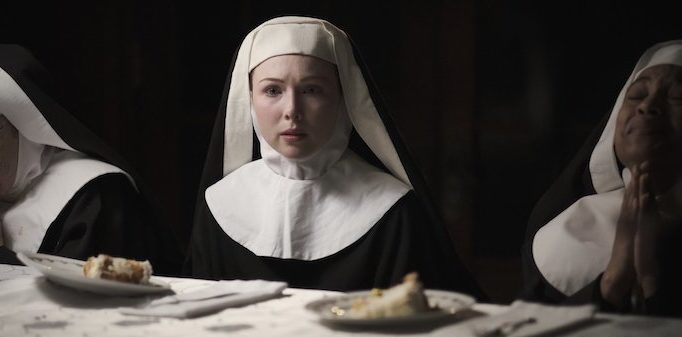Instead of being scary or stressful, Agnes decides to be an example of how filmmakers can become too distracted by their own attempts to subvert formulaic genre conventions.
Director Mickey Reece pitches audiences a familiar premise featuring a covent of nuns overturned by a demonic possession. The covent is absolutely traumatized as they witness one of their own succumb to a supernatural force, especially meek onlooker Mary (Molly C. Quinn of Hansel & Gretel Get Baked). In fact, the experience is so upsetting, it leaves Mary at a personal crossroad: continue living with her devout community or leave the covent – Mary chooses the latter. However, the trauma follows Mary as she slowly discovers that she’ll have to eventually confront what she’s been suppressing.
Agnes offers the typical tropes found in the possession horror sub-genre, and delivers them in a typical fashion. Other than the odd surprise and the occasional glimpse of gore, there’s nothing in these early scenes you haven’t seen in another movie. However, Agnes passes up the opportunity to elaborate on this possession to hang out with Mary. Unfortunately, Mary’s life outside the convent is bland. In a narrative departure that’s almost interesting, Mary meets up with a stand-up comedian (Sean Gunn), and they quickly become infatuated with each other. But ultimately, this relationship doesn’t go anywhere, and the character revelation it builds up to and exposes is underwhelming. All of this leads to an anticlimactic finale comparable to 2012’s The Devil Inside.
Agnes actually becomes so dire that the audience starts yearning for the clichés the filmmakers wanted to avoid. It’s a shame, really.
**********
Do You Tweet? Follow These Tweeple:
Addison Wylie: @AddisonWylie





Be the first to comment